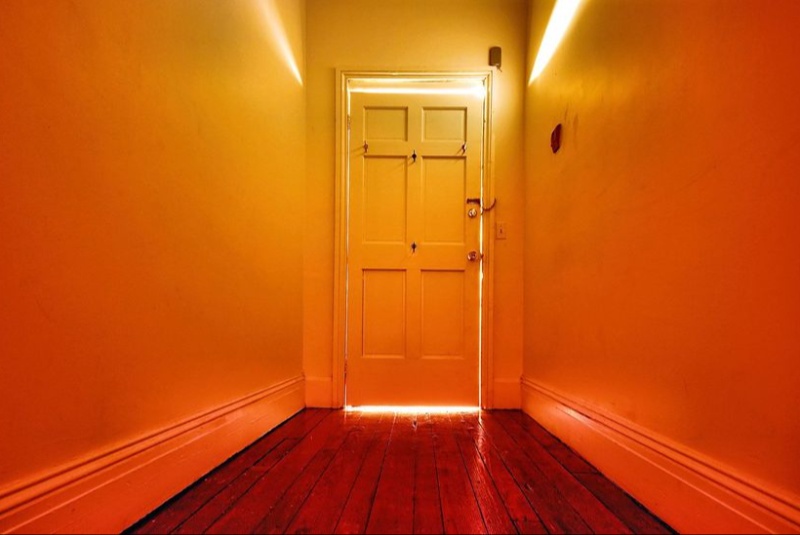Nestled in the heart of Pyongyang, North Korea, stands a colossal structure whose silhouette pierces the skyline with a silent narrative of both grandeur and abandonment. This is the Ryugyong Hotel, also known as the 105 Building—a name that echoes the ambitious architectural journey of a skyscraper that remains a mystery to much of the outside world.
In this deep dive, we shall explore the hotel's conception, its turbulent history, the socio-economic ripples it caused, and the current state of this towering enigma. Beyond its concrete and steel, the Ryugyong Hotel tells a tale of a country's struggle, its lofty aspirations, and a complex relationship with the world.
Origins and Architectural Vision
The Ryugyong Hotel's story begins in the late 1980s, a time when North Korea sought to stamp its mark on the world through a bold architectural statement. The hotel, with its striking pyramid-like form, was poised to challenge the global hospitality market and assert North Korea's capability to match and surpass international standards of luxury and design.
The hotel's design was a futuristic marvel, featuring sharp angles and an imposing façade that would house a multitude of facilities. The name "Ryugyong" itself—a historical term for Pyongyang—reflects the pride and the cultural significance of the project, tying it to the nation's identity. At the planned height of 330 meters, the Ryugyong Hotel was not only set to dominate the Pyongyang skyline but also to claim a spot among the world's tallest structures.
Construction: A Journey of Hopes and Hurdles
Construction of this behemoth commenced with high hopes in 1987. It was an era where architecture was seen as a powerful tool for national expression, and North Korea threw its hat into the ring with gusto. The goal was not just to create a hotel, but a multi-purpose complex—a nerve center for tourists, businesses, and international guests.
However, this journey was fraught with challenges. The building progressed significantly until 1992, but the disintegration of the Soviet Union and subsequent economic hardships brought North Korea to a grinding halt. The construction site, once a beehive of activity, morphed into a ghostly tower that stood windowless, vacant, and forlorn against the Pyongyang skies.
A Resurrection Postponed
The turn of the millennium brought with it new aspirations and, in 2008, construction efforts were rekindled with the exterior reaching completion. Anticipation buzzed through the air as rumors of a partial opening circulated, pegging 2012 as the year the Ryugyong Hotel would finally unveil its splendor.

Yet, the doors remained shut. The building's shimmering glass façade reflects a skyline that has grown around it, but the grand opening never came to pass. Many speculate that despite the renewed construction, the interior remains an incomplete tapestry—frozen in time and potential.
Rivalries and Economic Aspirations
The inception of the Ryugyong Hotel was, in many ways, a product of competition—a response to the Westin Stamford Hotel in Singapore, which held the title of the world's tallest hotel at the time. North Korean leaders envisioned the Ryugyong as a magnet for foreign investment, with projections floating around $230 million.
The government tantalized potential investors with the promise of relaxed oversight, allowing for an array of operations, including casinos and nightclubs—a stark contrast to the typical rigidity associated with North Korean policies. Yet, these dreams dissolved into the realm of 'what could have been,' as financial and material roadblocks proved insurmountable.
The Tallest Empty Building
Had the Ryugyong Hotel come to fruition on its original schedule, it would have not only eclipsed the Westin Stamford but also carved its name into the list of the world's tallest buildings as the seventh highest. It stands as a testament to the sheer scale of ambition that propelled its creation.
The official line from the North Korean government attributes the project's stalling to a lack of funds. However, whispers and theories suggest that the challenge was far more complex, involving inaccessibility to the necessary raw materials and possibly technological know-how.
Legacy and the International Perspective
Internationally, the Ryugyong Hotel has often been met with curiosity and intrigue. Its striking presence has earned it nicknames and a place in popular culture as a symbol of a "phantom hotel" or the "Hotel of Doom." It remains a subject of interest for urban explorers and commentators on North Korean affairs, symbolizing a peculiar blend of ambition and enigma.
While the Ryugyong Hotel's silhouette cuts an unmistakable figure against the backdrop of Pyongyang, its interiors are shrouded in mystery. Does it stand as a hollow monument to past dreams, or does it brim silently with the potential yet to be realized?
Reflections and the Future
Today, the Ryugyong Hotel continues to captivate the imagination. The question on many lips is whether it will ever fulfill its intended purpose. Will it remain a relic of a bygone era of ambition, or will it experience a rebirth to become the thriving hub it was meant to be?
The Ryugyong Hotel's journey is a narrative etched in concrete and glass—a chronicle of a nation's aspirations, the harsh realities of political and economic upheaval, and the undying human spirit of ambition. Its story is far from over, and the world watches with bated breath to see what the future holds for this modern marvel of unfulfilled promise.




